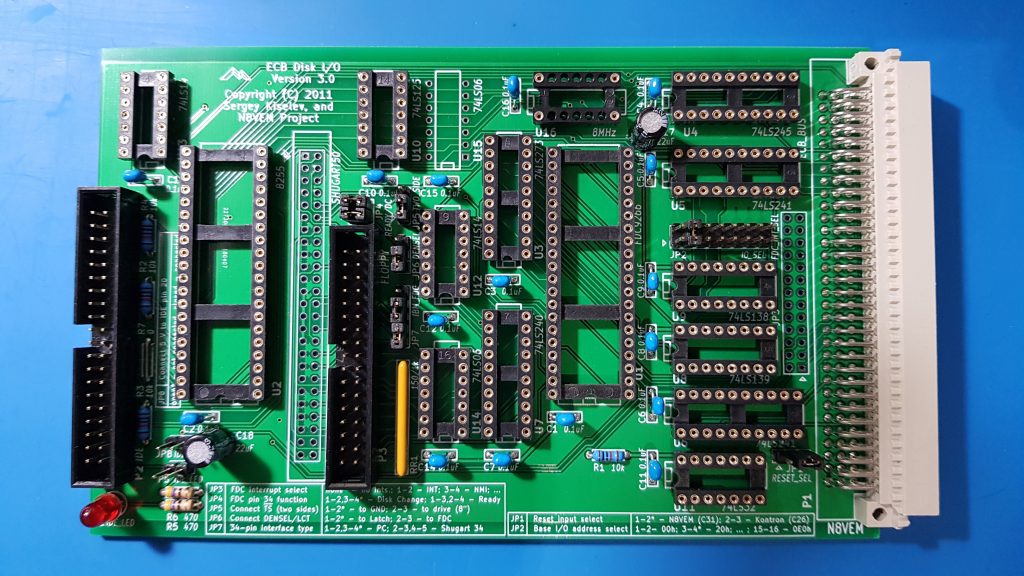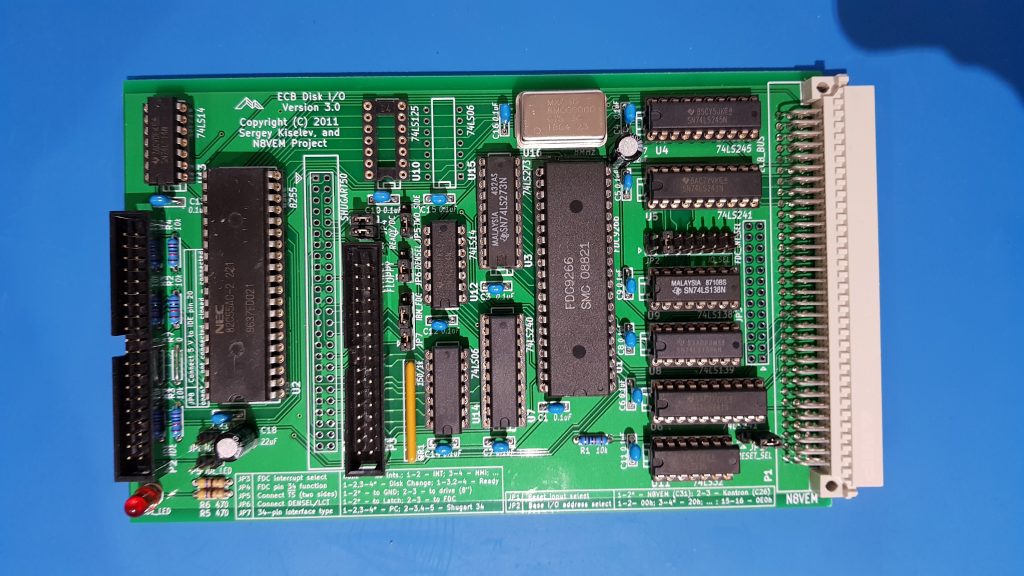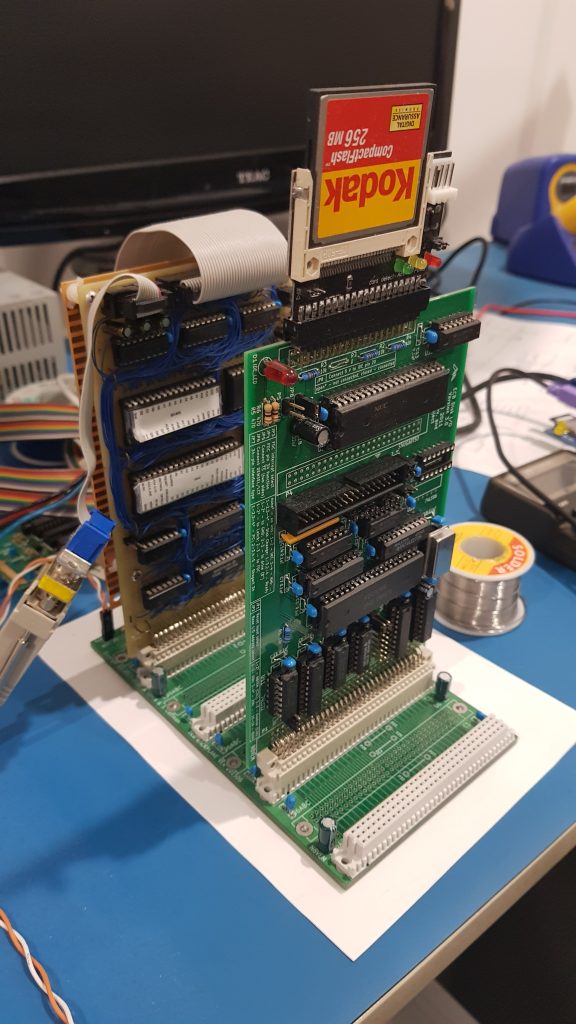Next on the build list from the Retrobrew Computer stable is the ECB DiskIO V3 board, which is a IDE and FDD interface for the ECB system.

Unfortunately I didn’t take many images of the process of building this board, but there isn’t too much going on here on the board. Just the 82C55 for the IDE interface and the FDC9266 and associated gates for the floppy interface, and of course the buffers for the ECB interface.
Once the sockets, passive components, and jumpers are installed, I added the chips.

Once the chips are installed, we are ready to test with the SBCv2 module to see if the Z80 can talk to it and work with a hard disk and floppy. For the ROMWBW to work with the DiskIOv3, we need to configure an image of ROMWBW to be able to detect it. So a reconfiguration of the build config file, and a rebuild of the image is needed. This is well documented in the ROMWBW Source Readme, so basically I enable the DISKIOv3 mode for the PPIDEMODE and FDMODE settings, and rebuild the ROM, burn it and install it back on the SBCv2.
Lets put the SBCv2 and DISKIOv3 on the backplane and hook up an IDE disk and a floppy and see if it works.
2023 – so, it’s been 5 years (wow). Some work on this has been done intermittently, but real life has just pulled me away from this for a while. This is a hobby after all.
So, I hooked up a floppy drive and had mixed results. I bought 2 of the FDC9266’s from UTSource, so I’m unsure whether they are working, faulty or fake. I have a bunch of 1.44 floppy drives that I tried as well, which, once again maybe good, or faulty. I wasn’t sure whether it was the drives or chip, so I gave up for a while on the FDC. I have had good success with the IDE interface though, and it works great with the SBCv2 (and now my ECB2650). Since I built the board, I have changed the IDE connector so that the IDE/CF interface sits upright, which works better when you want to populate a backplane. Lots more to come with the 2650 board…..

